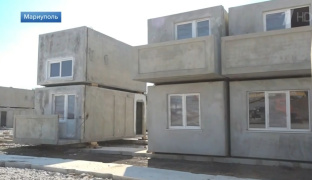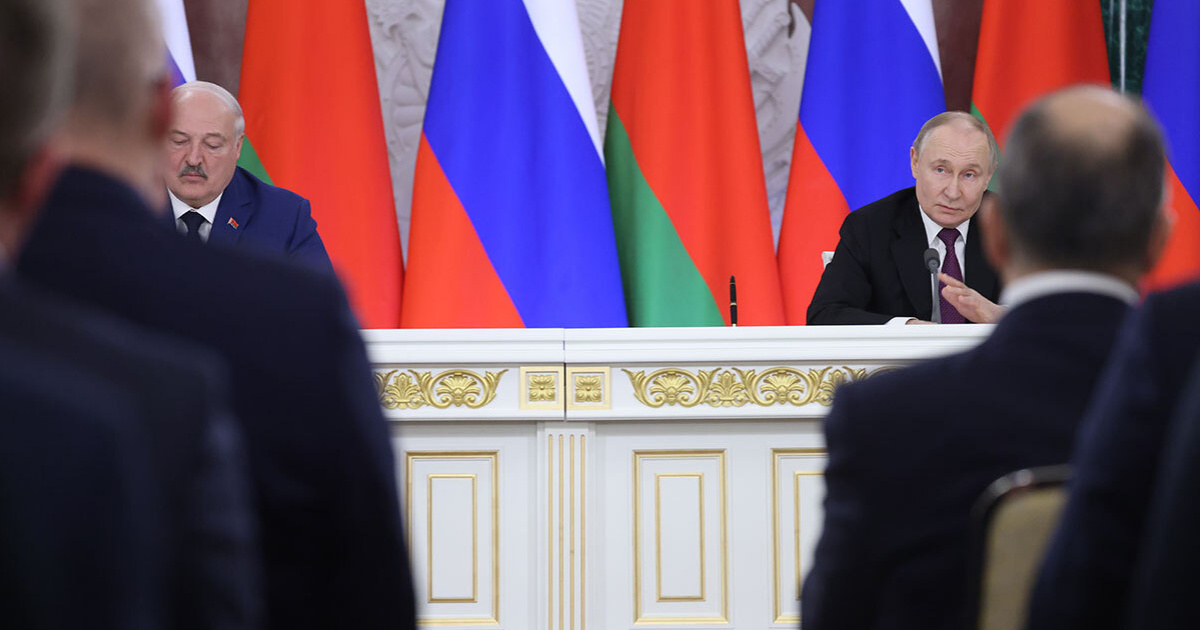During three months of the cadence, President Volodymyr Zelensky demonstrated the characteristic style of handling personnel: public “dressing down”, dismissal for camera, appointment and removal from office without the slightest warning to those who are being appointed or removed. The last such case is the release of Roman Bezsmertnyi from the authority to represent Ukraine at the talks in Minsk. As well as about his appointment, Bezsmertnyi learned about this from the media.
The newly elected president seems to continue to play the hero of his television series. The audience is usually satisfied. Probably, it was Zelensky’s voyages around the country with public defamation of local officials in the pre-election period that contributed to the growth of his party’s rating after a certain drop.
However, the situation with Bezsmertnyi was beyond the pale. Having returned in July at the initiative of the president to the Trilateral Contact Group, which he left in 2016, Bezsmertnyi began to speak daily in the media, informing the public in detail about what was happening in the negotiations in the capital of Belarus practically for the first time in several years.
Not gaining even a percent of the vote in the first round of the presidential election and losing in the district in the parliamentary elections, Bezsmertnyi nevertheless became popular due to his media openness. The office of the president considered the negotiator from Ukraine in the TCG, obviously, hyperactive or destructive at some point.
Zelensky’s and Bezsmertnyi’s approaches to behavior in the framework of the resumed negotiations with Russia clearly diverged after August 6, when four Ukrainian marines were killed at the contact line as a result of mine explosion. If it was a provocation, then it was not emotional and inexperienced in politics Zelensky, but Bezsmertnyi, who bought into it.
The latter called for suspension of contacts in Minsk until the unassigned meeting of leaders of the Normandy format and taking a number of measures in the region to prevent other possible provocations, including stopping mine clearance at the area of the Stanytsia Luhanska checkpoint for an indefinite period and blocking all the checkpoints. For hundreds of thousands of people in the region, these steps would be an absolute disaster, says Serhiy Shapkin, head of the village of Pavlopil, near whom the Marines died.
Instead of a panic reaction that would obviously launch a new round of confrontation, and which could be expected from Petro Poroshenko, Zelensky phoned Russian President Vladimir Putin for the second time.
A source in the south of the Donetsk oblast says that the fatal shot near Pavlopil was the only one in the area that day and that in the previous few days, both parties observed a ceasefire that was violated from time to time by both parties.
Referring to conversations with the military, OstroV’sc interlocutor notes that the killing was obviously unintentional. The Marines died from fragments of a mine, somehow attached to the shell of a hand-held anti-tank grenade launcher.
“An RPG shell hits the armor, burns it and bursts inside. It is useless to defeat the infantry. Therefore, a fragmentation mine is attached to an RPG shell. These are the tricks of the trench warfare: the DNR men “invented” this weapon after the coordinated removal of mortars. But sighting with such weapons is impossible to get into the trench or dugout”, - the source of OstroV explains.
He is sure that Russia and the self-proclaimed republics were not preparing any large-scale offensive either that day, earlier or later. “The first sign of the offensive is the work of hospitals. First of all, a command is given to doctors to prepare places for the wounded. I know that the Novoazovsk hospital did not receive such an order”, - our interlocutor noted.
The interview with Roman Bezsmertnyi was recorded before the tragedy near Pavlopil, when he still presented Ukraine in the Trilateral Contact Group. Then the next meeting was just being prepared in Minsk, from which new progress was expected in matters of repairing the bridge at the only checkpoint in the Luhansk region in Stanytsia Luhanska, exchange of prisoners and search for persons missing in action.
Visible changes began to occur in the region with the change of power in the capital, and there is no doubt that their essence is in the position of Zelensky, and not in the position of Bezsmertnyi or anyone else in the TCG. New meeting in Minsk will be held on August 21. Despite all the obvious and alleged provocations of the Russian Federation, the process continues. However, the question of its possible final results remains open.
OstroV: Changes in the approach to the Luhansk and Donetsk oblasts are obvious after the change of power. Confrontational rhetoric stopped, disengagement of forces took place near Stanytsia Luhanska, work on the restoration of the bridge began. What prevented this from being done in past years?
Roman Bezsmertnyi: These steps were developed in the period from late 2015 to early 2016. Recent decisions regarding the withdrawal of manpower were made in the fall of 2016. Why have not they been implemented for several years? There are several reasons for this. There are objective reasons: at the end of 2016, tension on the contact line resumed. At the same time, tension was growing on Azov, and already in 2017, it was clear that the engagement would be.
With the approach of the 2019 election, any maneuvers for President Poroshenko were politically dangerous. Therefore, by the end of 2017, active actions related to the implementation of agreements, even legally strong ones, were stopped. The fact is that president and presidential candidate Poroshenko chose confrontational rhetoric, but we need to understand that this is a consequence of the Kremlin’s behavior. I think it was thought out. Sociologists showed that the population is striving for peace, and the Kremlin provoked a conflict.
- Did you mean exactly this when you said that the situation in Minsk froze at the level of the end of 2016?
- Steinmeier formula, the issue of election modality, amnesty, further demining, withdrawal of manpower, the OSCE access to equipment home stations - this is what I managed to achieve in the fall of 2016 and what I faced again when I returned. What is now being implemented in Stanytsia Luhanskask, from the withdrawal of manpower to issues related to the cleaning of fortifications and repair of the bridge, is in the agreements that were being prepared at that time. Moreover, the European Union even accepted the proposal to allocate funds for the repair back then.
- The Red Cross explained to me that the point of the dispute is 40 centimeters of the width of this bridge. What is our position now?
- Ukraine is ready to take on the restoration of the bridge. No one spoke about the design features anymore: the bridge should be restored in the same way as it was. The talk is that tanks can go along it, etc… A pontoon bridge for tanks can be laid in a maximum of two hours. That is, it was a completely pointless discussion and I do not know who started it and why.
- I understand the meaning of the Minsk talks from the point of view of resolving such specific issues. But each party manically repeats that it is committed to the Minsk agreements, reading them differently, and personally I look at them like at the mine under Ukrainian statehood.
- The Minsk agreements, just like the Steinmeier formula, just like the Morel plan, just like the Sajdik plan are already proper names. As of today, the composition of those who tried to fulfill them has changed several times. Legally, the Minsk agreements, if interpreted as agreements, ended on January 1, 2016. They were extended by the decision of representatives of the Normandy format, as if indefinitely. A number of legally strong documents were drawn up under the Minsk agreements: protocols on the withdrawal of heavy equipment, medium equipment, mortars and tanks, clearance. A protocol was drawn up on the withdrawal of manpower in three positions. These documents are confirmed by maps. Everything else that is written there, but not enshrined in law and not ratified by the parliament, for the most part is morally, materially and practically out of date.
- That is, we no longer agree on the special status of the region?
- “The special order of local self-government” in the region is provided by the annual extension of the law on the features of local self-government. I emphasize this when Russia speaks of some kind of “special status” at meetings each time. Article 10 provides a mechanism for enforcing this law. There is also a law on the features of ensuring the sovereignty of Ukraine in certain areas of the Donetsk and Luhansk oblasts.
- Did you discuss the implementation of these laws at the talks?
- Their implementation is in the so-called Steinmeier formula: how and when the law on the peculiarities of local self-government will be enforced, temporarily and permanently. This is also a creative development of the Steinmeier formula. I have already said several times why it is unique. I am tired and I do not want anymore (laughs).
- Everyone reads it his/her own way.
- The entire Normandy and Minsk process lacks technological effectiveness and detalization. I do not know what the reasons for such things are. Probably, someone needs this.
- What is the ultimate goal? What do we want to achieve in these negotiations?
- For some time, the Minsk process for me meant pausing so that the Ukrainian armed forces would get on their feet. Now, from my point of view, the president has set the absolutely correct task: we need to do everything so that the people who are in hellish conditions feel the care of their homeland. There are citizens of Ukraine there. The occupier is responsible for their condition, but we need to do everything possible to make them feel better.
- Hellish conditions are the absence of any rights, lack of work, non-payment of pensions, constant punitive actions against the local population. Ukraine cannot do anything special here. Unless to establish a mechanism for paying pensions through the Red Cross and lift the blockade.
- There is something to work on. But the position of the parliamentary majority is not yet clear. The president’s position is partially understood. The question is in courage or lack of courage to make certain decisions, for example, the concept of reintegration with a perspective of 25, 50 years.
I hope that during the life of my generation we will be able to launch the reintegration process. The lack of dynamics is worst of all. We need to accept the concept and start moving. Withdraw manpower, build bridges, launch buses, introduce police instead of the regular army and create amalgamated territorial communities from the front-line settlements. Yes, it is hard and boring, but the main thing is movement, even by baby steps.
- Do you see such courage with the president?
- He has a desire to change the situation. Then everything will depend on whose advice he will listen to.
- Does the Ukrainian party have an understanding that the “republics” in eastern Ukraine are very different?
- These formations are very different. There is both cooperation and confrontation between them there, as was the case between the regional authorities. This is also felt in the sectors of tension along the demarcation line. The military and those involved in settlement issues understand it well.
- How constructive is that party in the negotiations?
- It is difficult to count on the presence in this process of people who are willing to negotiate. The question is in the level of independence of these people, and in the political climate. The election in Russia is on September 8. Is it beneficial for Putin to ease the tension before the election? No. He needs to strengthen it.
Yulia Abibok, OstroV




